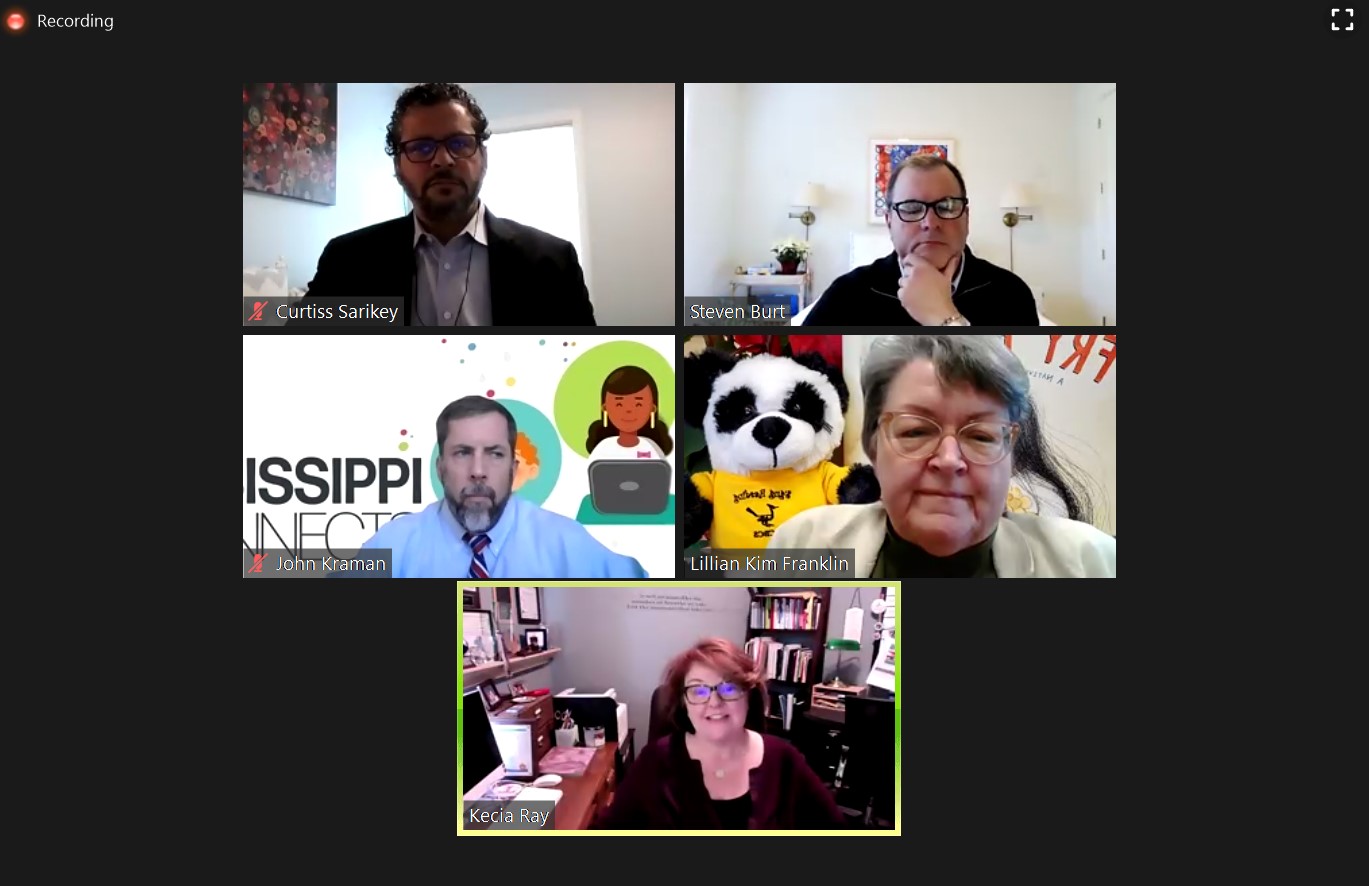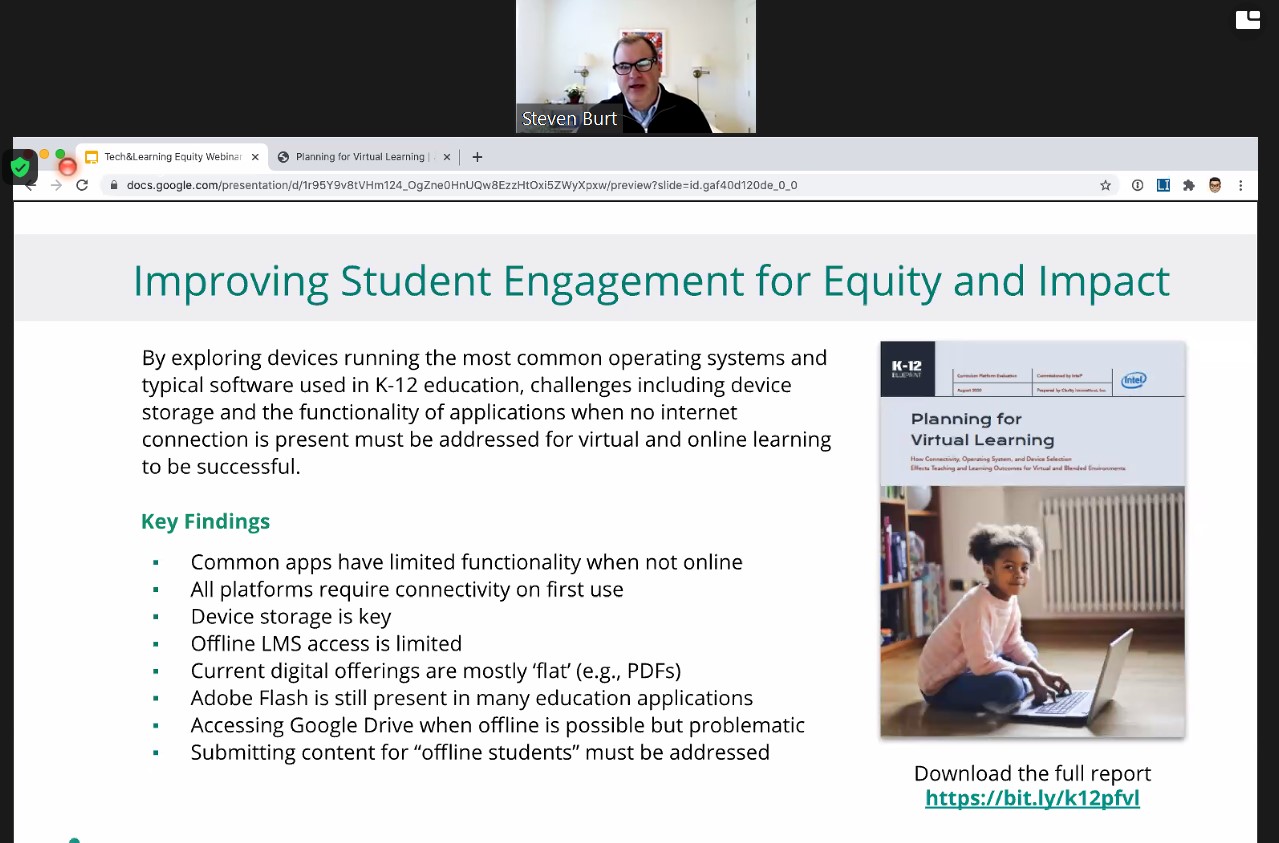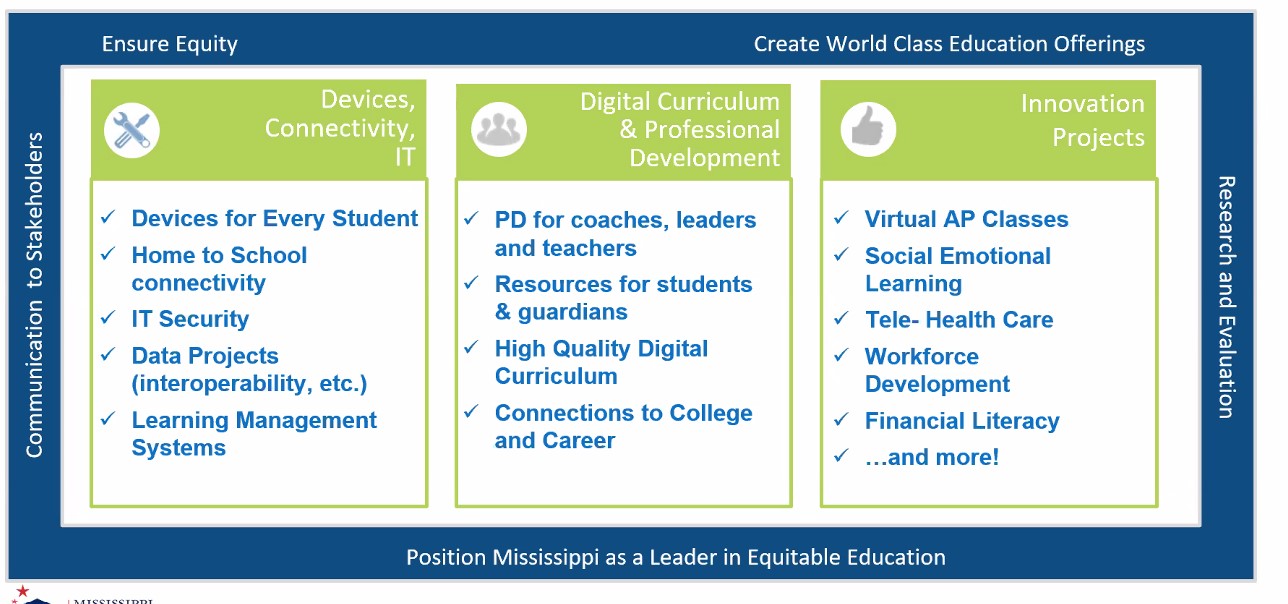Ensuring Consistent Equitable Student Connectivity
Providing consistent access for students continues to be a focus for education leaders

We talk a lot about equity and access, but if students don’t have consistent connections, they will not have consistent access. Relying on parents’ hotspots and other external wifi connections often means students do not have the consistent access they require for online and hybrid learning. This is especially evident for rural, BIPOC, and students residing in high-poverty areas who are disproportionately affected by persistent periods of limited or variable connectivity to the internet.
In this recent Tech & Learning virtual roundtable, Dr. Kecia Ray talked with leaders about the challenges when no consistent internet connection is present to support successful virtual and online learning, including device storage and the functionality of applications.
Watch the on-demand version here
Key Takeaways
Planning for virtual learning. “The pandemic digital divide wasn’t at the front of minds at the beginning of the pandemic, but has become more so as we realize there’s a huge population of students who don’t have connectivity,” said Steven Burt, Director of Strategy for Clarity Innovations. Burt discussed in depth the findings from the Planning for Virtual Learning report commissioned by Intel.
A primary focus of the report is on improving student engagement for equity and impact.

Although there are many challenges, there have been good practices and implementations to improve access and engagement, said Burt. “All in all, we didn't feel that there were impossible situations that students are facing because of some of these situations that they find themselves in,” he said. “What we've seen is that some preparation and forethought -- essentially planning -- for what this is going to look like down the line is really going to help resolve or mediate a lot of these issues.”
Paradigm shift. “Connectivity is an essential function of education,” said Lillian Kim Franklin, Principal, Casa Blanca Community School at the Gila River Indian Community in Arizona, a socio-economically challenged rural district that has gone from zero to full remote learning since the beginning of the pandemic. “In March, I heard someone say that education is just throwing spaghetti against the wall to see what would stick. We were engaged in that, too!” said Franklin.
Tools and ideas to transform education. Sign up below.
Rather than try to get by with temporary measures, and with a high at-risk population, leaders at Gila River made a long-term commitment to remote learning. Funding was secured from CARES Acts monies and a Creating Learning Connections grant, and partnerships were forged with local businesses and service providers, resulting in every student and family in the district receiving a device, unlimited wifi, and/or hotspots, as needed. Professional development was provided for staff as well. Now every student enjoys a full remote curriculum, and will continue to well into the spring.
“Most of us had been talking about what could happen if all our students had connectivity and devices, but that was way off in the future until the pandemic created a paradigm shift,” said Franklin. “And now, if there is a silver lining, it's that it has shifted the attention to where now when we're talking about next year, and being able to come back in person, we are talking about what will the IT component of that be, and what will we be doing in virtual learning that we had not been able to do before.”
Read more about Casa Blanca’s efforts here.
No student left behind. “If there’s a silver lining to this pandemic, it’s been being able to take the bull by the horns around some deep equity issues and make good on promises to our community,” said Curtiss Sarikey, Chief of Staff for Oakland USD in California, which serves nearly 53,000 students, more than 75% of whom qualify for free or reduced lunch. His district’s remote learning plan had three main components: Devices, connectivity, and tech support. To achieve that, they partnered with the mayor’s office to get 25,000 computers into the community, and then bought 34,000 more. They also distributed more than 10,000 hotspots, and provided universal broadband and tech support.
In addition, the IT department mapped internet coverage area for every home in the district to make sure every student is connected, and to learn how they are connected, what devices they’re using, and what support they’re getting. The district has also opened community-based learning hubs to provide access for students dealing with homeless and those in foster care. “We're really working closely with community organizations and parent advocacy organizations to make sure that we're not leaving any child or any home behind in this effort,” said Sarikey.
Get thee to the internet. “At the beginning of the pandemic, we wanted to help all the kids in the state, but knew every district was in a different place with different needs,” said John Kraman, Chief Information Officer for the Mississippi Department of Education, which received funding from CARES Act to help bring remote learning to those economically challenged students in the state who didn’t have access.
“We were really focused on what does it mean to effectively, efficiently, and successfully link teachers to students and students to their classroom, classmates, and instruction,” said Kraman. “And so we thought about not just what connectivity needed to look like, what were the device needs, but most importantly, how do we make sure that that human connection was there and then what opportunities does this foundation created for us in the long run.”
The biggest challenge was striking a balance between what the schools could achieve together and what independence was necessary to continue what students and teachers were already doing successfully, said Kraman. “If we couldn’t get internet to the students, we needed to get students to the internet,” he said.
Ultimately, equity continues to be an integral aspect of Mississippi’s remote learning, with a focus on hardware, support, PD, and innovation moving forward.

“We made commitments to move forward in a very aggressive way and our program has been successful to date in part because we thought big, we've acted big, and we’ve moved aggressively to put in place the solutions that we've come up with,” said Kraman. “And we continue to learn and adjust along the way.”
Lunch 'n Learn with Tech & Learning
We hope you can join us for these regular District Leadership Lunch ‘n Learn Roundtable series, hosted by Dr. Kecia Ray. In this events, districts from across the U.S. share their strategic plans, the challenges they are facing, and the creative solutions they are using to support students and teachers. Register for our upcoming event here.
More from T&L: Lunch 'n Learn roundtable recaps
Ray Bendici is the Managing Editor of Tech & Learning and Tech & Learning University. He is an award-winning journalist/editor, with more than 20 years of experience, including a specific focus on education.
